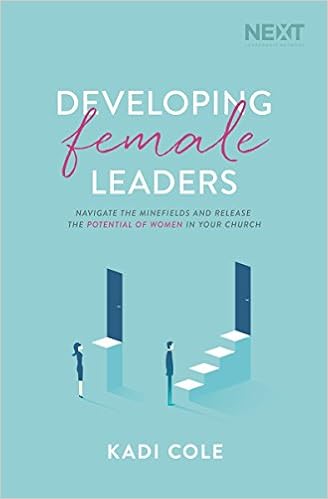
Over these past several months I have taken advantage of listening and viewing various live events and podcasts, relative to leadership and organizational development by top leadership experts in their fields. In this short article, I will share with you some of the key takeaways from conversations with these individuals. The first person is someone you might not be as familiar with as say a John Maxwell, but she is an author and outstanding leader with an impressive pedigree. Her name is Kadi Cole and you can learn more about her background and her company by going to www.kadicole.com.

Ed Stetzer stated in a March 5th interview with Kadi concerning her book, “This book will educate and inspire you to better maximize the leadership potential of the women in your church.” In a recent podcast on developing female leaders with the Leadership Network, Kadi shared the following differences between male and female leaders and gave those of us as male leaders these important considerations:
- Men interrupt each other conversationally to redirect, to go in another direction with their conversation.
- Women interrupt each other conversationally in an attempt to connect with the other person.
- Men look at a job description and if they feel confident they will apply for the position.
- Women look at a job description and will look to see if they can do everything 100% well, and then they will apply for the position.
- Just because women are invited to a seat at the table doesn’t mean they will receive equal time to speak and address topics as their male counterparts. There is a difference between being in the room and at the table and being an active participant.
- Men receive more specific feedback as leaders than women do. Male leaders tend to give female leaders more vague, less specific feedback.
- Relative to the Protestant church women make up 61% of attendees on any given Sunday.
- Relative to the Protestant church women fill 10% of the leadership positions within the church overall. Do you see the huge disconnect here, whether you hold a complementarianism or egalitarianism view where women in leadership in the church are concerned?
In the interview with Stetzer and in her book Kadi states that she “Isn’t looking to change anyone’s theology, but we are missing out on some excellent leaders because of miscommunication. This book provides language and tools to help you better articulate the theology you already have, and to communicate that with your team so everyone’s leadership potential is maximized.” I would encourage both male and female church leaders to purchase this book to read and discuss together. Use it as a rubric to enhance and develop all leadership on this topic and to encourage other women to become leaders and realize their full leadership potential within your church and denominational theology.